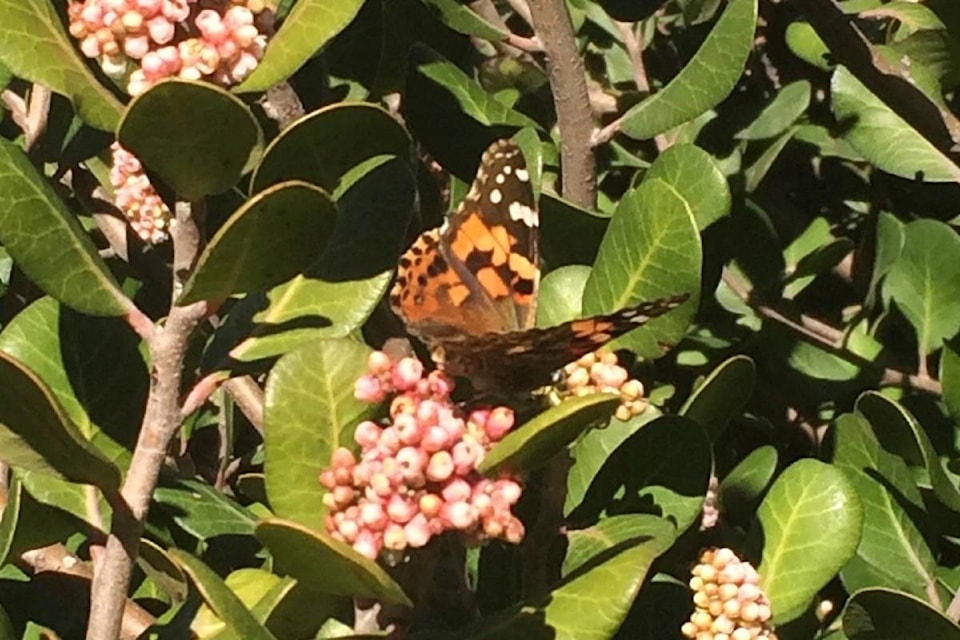Billions of butterflies are migrating north from Southern California, and British Columbians may get a glimpse of some unusual species this summer, such as the painted lady.
Sally Otto, a zoologist at UBC, said substantial rainfall has triggered the unusual swell.
“The past few years of drought in California hit the caterpillars hard and few butterflies survived, but this year’s heavy rains has led to a massive bloom of flowers and greenery, allowing many more butterflies to emerge and leading to this epic migration,” she said.
In previous years, poor weather conditions meant plants couldn’t flourish. Butterflies lay their eggs on plants so when caterpillars emerge, they can feed off them. The last big migration was in 2005.
Epic migration of painted ladies (Vanessa cardui) - saw 1000s flying across the ocean and coast near the Catalina Islands CA pic.twitter.com/HxKVkcqGmb
— Sarah Otto (@sarperotto) March 21, 2019
Due to the dry summer climate in California, the painted ladies migrate after hatching because plants in the north stay greener much longer, according to Otto.
“More severe weather variation linked to climate change is likely to lead to stronger booms and busts in species like the painted lady.”
Only a small number will reach B.C., according to E-Fauna BC, an online atlas of wildlife run by UBC’s geography department.
It’s not clear how far north the painted lady will reach this time, but Otto suspects Vancouver will be as close to the northern edge of their range, with the butterflies set to arrive by June or July.
READ MORE: California storms bring mudslide fears, blizzard warning
The Canadian Biodiversity Information Facility describes the painted lady, scientifically known as Vanessa cardui, as the most “most cosmopolitan” of butterflies, with an orange-pink colour, dark markings on the upper surface, and a wingspan no larger than seven centimetres.
“It is thought that they reproduce here in the summer (and not the winter), but it’s not clear what happens afterwards and whether their babies then migrate south from here,” said Otto.
joti.grewal@bpdigital.ca
Like us on



